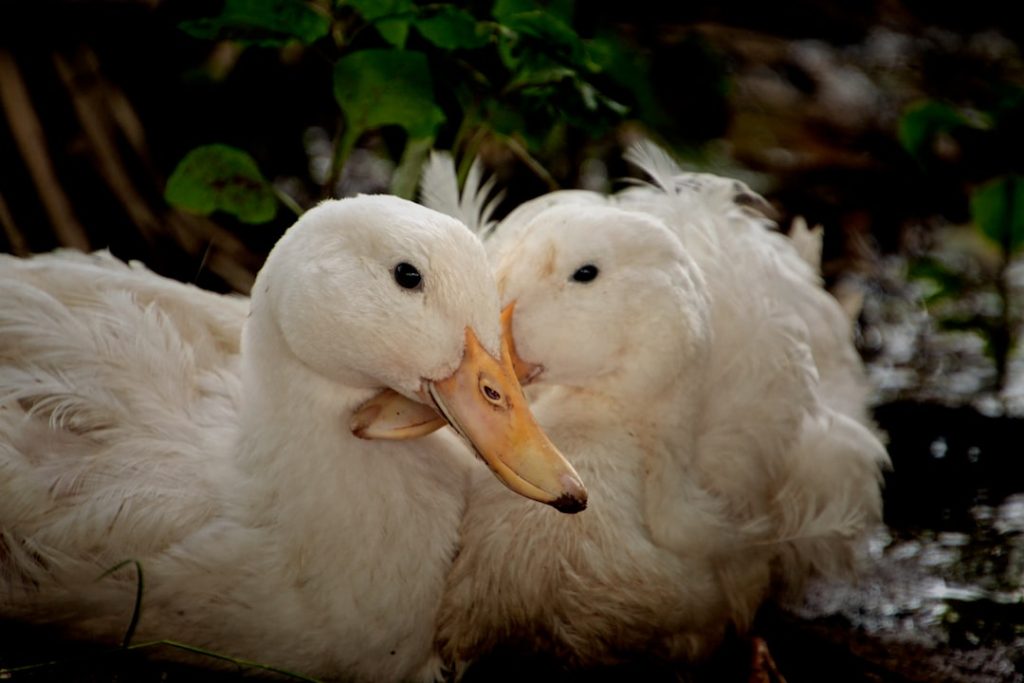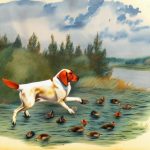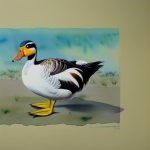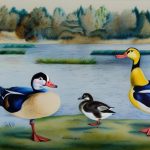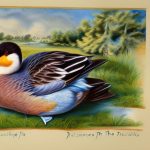Non-flying duck breeds are a unique and fascinating group of waterfowl that have been selectively bred for their inability to fly. While most duck breeds are capable of flight, non-flying duck breeds have been developed specifically for their grounded nature. These ducks are often kept for their ornamental value, as well as for their calm and gentle demeanor. Non-flying duck breeds are popular among hobbyists, small-scale farmers, and homesteaders who are looking for a low-maintenance and visually appealing addition to their flocks. In this article, we will explore the characteristics, popular breeds, care requirements, breeding and raising, and the benefits of keeping non-flying duck breeds.
Table of Contents
Key Takeaways
- Non-flying duck breeds are a unique and interesting alternative to traditional flying duck breeds.
- Non-flying duck breeds are known for their calm and friendly nature, making them great for backyard or small farm settings.
- Popular non-flying duck breeds include the Pekin, Muscovy, and Indian Runner, each with their own distinct characteristics and traits.
- Caring for non-flying duck breeds involves providing a suitable living environment, proper nutrition, and regular health check-ups.
- Breeding and raising non-flying duck breeds can be a rewarding experience, but it requires careful planning and attention to the needs of the ducks.
Characteristics of Non-Flying Duck Breeds
Non-flying duck breeds are known for their distinctive physical characteristics and behaviors. These ducks typically have a heavier body and shorter wings compared to their flying counterparts. Their wings are often too small or underdeveloped to support flight, making them reliant on their strong legs for mobility. Non-flying duck breeds also tend to have a more upright posture and waddle when they walk, giving them a charming and endearing appearance. In terms of behavior, non-flying duck breeds are generally more docile and less skittish than flying duck breeds. They are known for their friendly and sociable nature, making them great additions to backyard flocks and family farms. Additionally, non-flying duck breeds are excellent foragers and are well-suited for free-range environments, as they are less likely to wander off or attempt to fly away.
Popular Non-Flying Duck Breeds
Several non-flying duck breeds have gained popularity among enthusiasts and breeders for their unique characteristics and attractive appearances. One of the most well-known non-flying duck breeds is the Indian Runner duck, which is prized for its upright stance, distinctive egg-shaped body, and excellent egg-laying capabilities. Indian Runner ducks come in a variety of colors, including white, fawn, black, and chocolate, making them a visually striking addition to any flock. Another popular non-flying duck breed is the Swedish Blue duck, known for its striking blue plumage and calm temperament. Swedish Blue ducks are valued for their meat production as well as their ability to thrive in various climates. Other popular non-flying duck breeds include the Khaki Campbell, Welsh Harlequin, and Magpie ducks, each with its own unique set of characteristics and qualities that make them desirable for different purposes.
Caring for Non-Flying Duck Breeds
Caring for non-flying duck breeds requires attention to their specific needs and behaviors. These ducks thrive in environments with access to water for swimming and foraging, as well as ample space to roam and explore. Providing a secure enclosure with proper fencing is essential to prevent predators from harming these grounded ducks. Non-flying duck breeds also benefit from a balanced diet that includes a combination of commercial duck feed, fresh greens, and access to insects and other natural foods. Additionally, regular grooming and maintenance of their living quarters are important to ensure their health and well-being. It’s also crucial to monitor their weight and overall condition to prevent obesity and related health issues. Overall, caring for non-flying duck breeds involves creating a safe and enriching environment that meets their physical and behavioral needs.
Breeding and Raising Non-Flying Duck Breeds
Breeding and raising non-flying duck breeds can be a rewarding experience for enthusiasts and small-scale farmers. When breeding non-flying duck breeds, it’s important to select healthy and genetically sound individuals with desirable traits such as good conformation, temperament, and productivity. Providing proper nesting areas and ensuring a stress-free environment can encourage successful breeding and hatching of ducklings. Raising non-flying ducklings involves providing a warm and secure brooding area, as well as a balanced diet that supports their growth and development. It’s important to monitor their health and socialization with other ducks to ensure they thrive into adulthood. Additionally, providing opportunities for natural behaviors such as swimming and foraging can contribute to the overall well-being of non-flying ducklings as they mature into adults.
Benefits of Keeping Non-Flying Duck Breeds
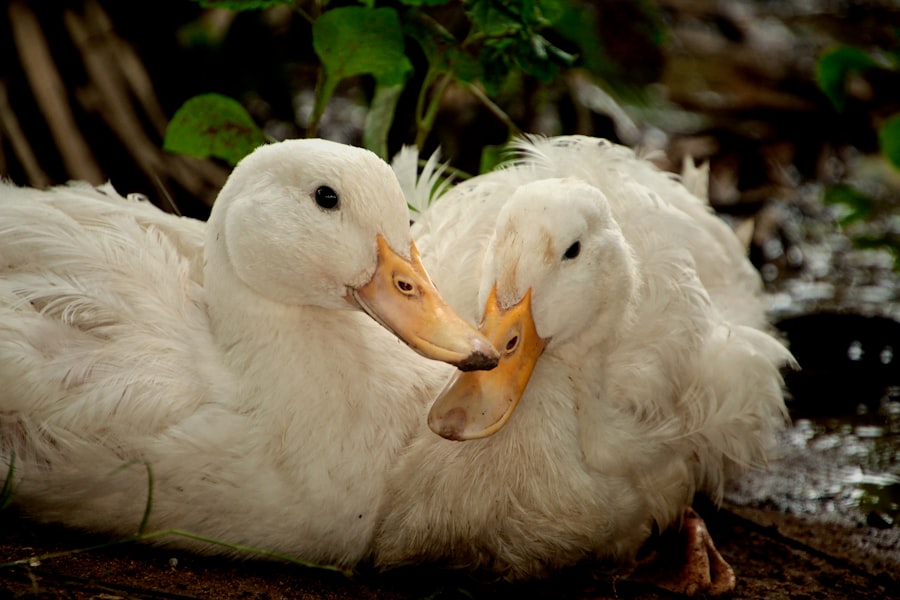
There are several benefits to keeping non-flying duck breeds that make them an appealing choice for hobbyists and small-scale farmers. One of the main benefits is their ornamental value, as non-flying duck breeds come in a wide range of colors and patterns that add visual interest to any flock or farm. Their calm and sociable nature also makes them enjoyable to interact with and observe, especially for families with children or individuals looking for low-maintenance pets. Non-flying duck breeds are also valued for their egg-laying capabilities, with some breeds such as the Indian Runner and Khaki Campbell ducks known for their high egg production. Additionally, non-flying duck breeds can contribute to sustainable farming practices through natural pest control and soil enrichment from their foraging activities. Overall, keeping non-flying duck breeds can provide both practical benefits and aesthetic enjoyment for those who appreciate these unique waterfowl.
The Appeal of Non-Flying Duck Breeds
In conclusion, non-flying duck breeds offer a distinct charm and appeal that sets them apart from their flying counterparts. Their unique physical characteristics, calm temperament, and practical benefits make them an attractive choice for those looking to add ducks to their flocks or farms. Whether it’s the striking appearance of Indian Runner ducks, the gentle nature of Swedish Blue ducks, or the productivity of Khaki Campbell ducks, there is a non-flying duck breed to suit a variety of preferences and purposes. Caring for, breeding, and raising non-flying duck breeds requires attention to their specific needs and behaviors, but the rewards of interacting with these grounded waterfowl make it a worthwhile endeavor for enthusiasts and small-scale farmers alike. Overall, the appeal of non-flying duck breeds lies in their unique combination of ornamental value, practical benefits, and endearing personalities that make them a delightful addition to any flock or farm.
If you’re interested in non-flying duck breeds, you might also want to check out this article on Snaplock Chicken Coop from PoultryWizard. It provides valuable insights into creating a safe and comfortable environment for your poultry, which can be beneficial for both ducks and chickens alike.
FAQs
What are non-flying duck breeds?
Non-flying duck breeds are domesticated duck breeds that have been selectively bred over time to have reduced or non-existent flight capabilities. These ducks are typically raised for their meat, eggs, or ornamental purposes.
What are some examples of non-flying duck breeds?
Some examples of non-flying duck breeds include the Pekin duck, the Muscovy duck, the Rouen duck, the Cayuga duck, and the Indian Runner duck. These breeds have been bred for their size, meat quality, or unique physical characteristics.
Why are some duck breeds unable to fly?
Some duck breeds have been selectively bred for traits that make them heavier and less aerodynamic, which reduces their ability to fly. This has been done to make them more suitable for domestication and to meet specific agricultural or ornamental needs.
What are the advantages of raising non-flying duck breeds?
Raising non-flying duck breeds can have several advantages, including easier containment and management, reduced risk of escape, and a focus on other desirable traits such as meat production, egg laying, or unique physical appearances.
Can non-flying duck breeds still swim?
Yes, non-flying duck breeds are still capable swimmers. Their reduced flight capabilities do not affect their ability to swim and they often enjoy spending time in water.
Meet Walter, the feathered-friend fanatic of Florida! Nestled in the sunshine state, Walter struts through life with his feathered companions, clucking his way to happiness. With a coop that’s fancier than a five-star hotel, he’s the Don Juan of the chicken world. When he’s not teaching his hens to do the cha-cha, you’ll find him in a heated debate with his prized rooster, Sir Clucks-a-Lot. Walter’s poultry passion is no yolk; he’s the sunny-side-up guy you never knew you needed in your flock of friends!

